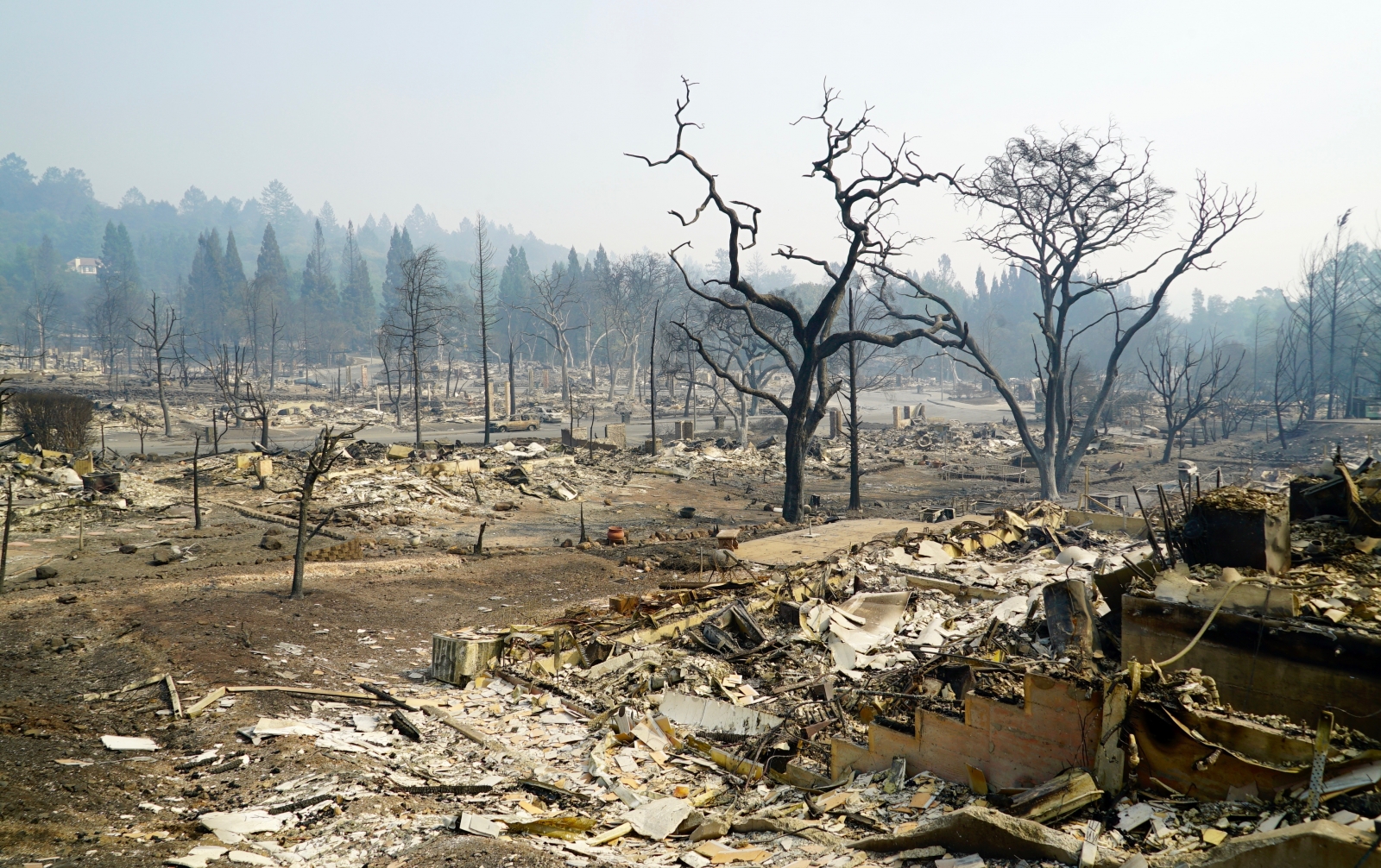During a December 2017 convening in Philadelphia, several leaders from Mobilizing Action for Resilient Communities (MARC) realized they had more in common than a passion for building resilience in their communities.
They all hailed from places that had recently been scorched or flooded by natural disasters: wildfires in California and the Columbia River Gorge, hurricanes in Florida, the lingering residue of 2012’s post-tropical cyclone Sandy in the Northeast.
“We had this new commonality: our communities were in turmoil,” says Holly White-Wolfe of Sonoma County ACEs Connection. “We knew we needed a trauma response—not just sensitive to the physical disaster, but to the emotional experience. We said, ‘Maybe we should all get together and come up with some ways of helping communities cope.’”
That realization launched six months of research, discussion and brainstorming among White-Wolfe, Katharine Briar-Lawson of Albany’s HEARTS (Healthy Environments and Relationships that Support) Initiative, Rosa Ana Lozada from the San Diego Trauma-Informed Guide Team, Claire Ranit of Oregon’s Resilience Network of the Gorge and Robin Saenger, founder of Peace4Tarpon in Florida.
They examined how government agencies, social service providers, schools and other sectors typically respond to natural disasters and talked about what a trauma-informed post-disaster response would entail.
One key realization was that, ideally, communities would address inequities and become fluent in trauma-informed care before flames or storms strike. Longstanding problems—unemployment, lack of affordable housing, addiction, violence—only worsen after a natural disaster; the vulnerable can become fragile and even people who were previously secure may lose relatives, homes, pets, jobs and the safety net of community.
In Sonoma, people whose lives were tenuous before the fires, such as those who were homeless, “were even more affected,” says White-Wolfe. “There they were, outside, breathing the smoke. I wondered if they could access radios or TVs” to learn where to seek shelter or services.”
In addition, the chaos and suffering of a climate disaster can trigger trauma responses in people who have histories of adversity. The “second disaster”—the tangle of uncoordinated resources, disrupted services and lack of information that often follows a disaster—adds additional stress for individuals and communities, says Briar-Lawson, who helped with recovery efforts following 1992’s Hurricane Andrew and 2005’s Hurricane Katrina, and also taught disaster-response courses after 9/11.
While research shows that a small proportion of people affected by a natural disaster prove more resilient than expected, a far greater number suffer both physically and emotionally; those long-term wounds can even affect the next generation through epigenetic changes.
“Most disaster services—FEMA and state-level agencies—leave relatively early,” says Briar-Lawson. “The long-term rebuilding involving helping children and families and whole communities with their mental health and physical needs, their employment needs, may take years. So planning for the long haul is one key responsibility.”
What helped in Sonoma and other affected communities was that leaders from Mobilizing Action for Resilient Communities (MARC) and their respective cross-sector networks had already laid the groundwork of trauma awareness and response locally. In Sonoma, the county office of education sent home newsletters for parents describing signs of toxic stress in children. The Resilience Network of the Gorge hosted a free community event after the 2017 Eagle Creek fire to help people process stress and build resilience skills.

“The schools were already thinking ahead about how to create an environment that’s supportive,” White-Wolfe says. “That started two weeks after the fires,” which destroyed nearly 5,300 houses and forced temporary shutdowns of numerous area schools.
“Because we’d done the MARC work, the community knew to do trainings with our teachers before we re-opened schools. Kids were showing up who couldn’t focus, couldn’t sit still, were visibly upset, angry or crying.”
The five MARC leaders collaborated on a resource guide, “Addressing Trauma and Building Resiliency as Comprehensive Disaster Planning and Response,” which was presented at the annual Network for Social Work Management conference June 14-15 in San Diego.
The resource guide includes recommendations for communities both before and following a natural disaster; they include assessing community needs, planning for a 10-year recovery effort, engaging trauma survivors in the response effort, using peer support models and establishing cross-sector networks to boost coordination.
“We tend to forget that sometimes a crisis is an opportunity. Disasters open up all kinds of opportunities for innovative disruption,” says Briar-Lawson. For instance, disasters that induce mass displacements may break down the stigma of being homeless and prod communities to address ongoing homelessness in more inclusive ways.
For the MARC leaders, collaborating on the disaster-response research and discussion provided another opportunity to nourish the connections and deepen the work begun through the two-year grant period.
“We felt like we were part of a movement,” says White-Wolfe. “Our collaboration and resource-sharing helps all of us accelerate and magnify our efforts. This is our solution to not letting it be over.”
Visit Sonoma County ACEs Connection for more information and to download the resource guide, "Addressing Trauma and Building Resiliency as Comprehensive Disaster Planning and Response": https://www.pacesconnection.com...lanning-and-response
This article was originally posted June 26, 2018, on MARC.HealthFederation.org and was written by @Anndee Hochman, a journalist and author whose work appears regularly in The Philadelphia Inquirer, on the website for public radio station WHYY and in other print and online venues. She teaches poetry and creative non-fiction in schools, senior centers, detention facilities and at writers' conferences.
To read more from the MARC Shared Learnings series, visit: http://marc.healthfederation.org/shared-learnings
Title Image: A welcome sign on Highway 101 in Santa Rosa, CA. Kraig Lieb/Alamy Stock Photo


Comments (0)